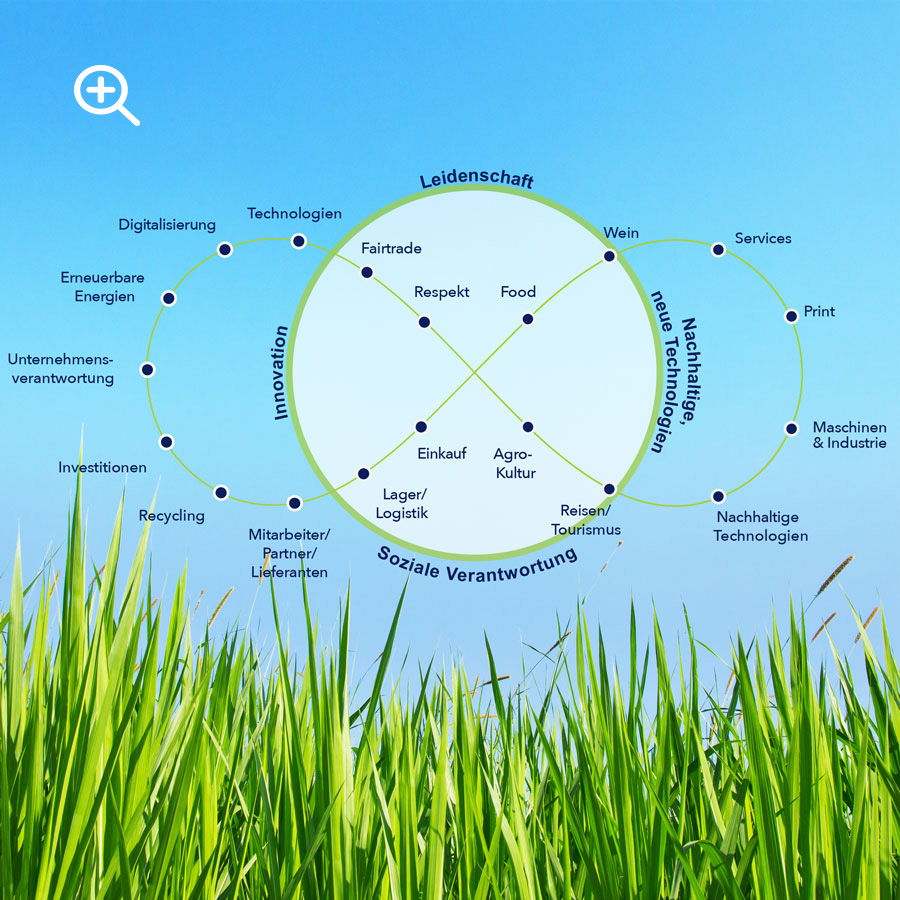Circular economy and zero emissions
We work according to the principles of the circular economy to reduce resource consumption and create added value. We focus on innovations that improve sustainability from development through purchasing and production to customer use.
THE MOST IMPORTANT ENVIRONMENTAL GOAL IS TO EMIT NET ZERO GREENHOUSE GASES BY 2030 AT THE LATEST.
THE MOST IMPORTANT LEVERS TO ACHIEVE THIS GOAL ARE PEOPLE AND INNOVATIONS.
The sustainability benefits
Use of normal industrial water

No chemicals
Targeted use
Long operating time
Reduced
water consumption
The future is now
CARBON- AND CHEMICAL-FREE WEED CONTROL
WE SUPPORT OUR CUSTOMERS TO WORK CO2-NEUTRAL THEMSELVES.
How chemical-free weed control succeeds
THE heatweed TECHNOLOGY - A LEADER IN SUSTAINABILITY
heatweed has over 35 years of experience in the professional treatment of weeds and invasive plants. With the hot water method, heatweed has been the leader for years. The water is heated to 106 degrees Celsius and reaches the cells of the roots at 98 to 99 degrees Celsius. With these temperatures, heatweed achieves the greatest and most lasting effectiveness. Studies have confirmed this several times.

THE heatweed TECHNOLOGY - A LEADER IN SUSTAINABILITY
Killing roots requires a systemic effect, the easiest way to achieve this is through heat input. Researchers at Ghent University found that hot water transfers 23 to 27 times more heat energy than hot air or steam. Reason enough to choose the best hot water method from heatweed.
WHAT TEMPERATURE AND WHY?
The systemic effect on the root is achieved with water at exactly 106°C, which still measures about 98°C to 99°C when in contact with the cells of the root. Too low or fluctuating temperature values are not promising. In addition, the heatweed method promises the longest "regrowth time" and convinces with the best results at the lowest total cost per square metre of treated area (compared to other chemical-free methods).
WHAT HAPPENS TO THE SEEDS?
When seeds germinate, they are more sensitive to heat. Some simply die, others are persistent. For example, annual wild weeds or weed species can often be destroyed in the first year by a single heatweed treatment. Perennial plants require some patience - their root system needs more than one treatment. By the way, anything growing next to the plant roots 2-3 mm below the surface will be preserved.
HOW OFTEN DOES THE METHOD NEED TO BE APPLIED?
Research by the University of Copenhagen has shown that treatment with hot water achieves the best result. Even high treatment frequencies have no effect on the life below the surface - roots excluded. Hot water method of heatweed to decide.
The comparison makes you safe
The heatweed method uses the energy of hot water to sustainably control weeds in urban areas while protecting the habitat of other plants. It is more efficient, more ecological and easier than any other method.
| FOAM | MECHANICAL | BURNING | HOT AIR | HIGH PRESSURE | heatweed | |
|---|---|---|---|---|---|---|
| Impact on the environment | Very high due to palm oil or avocado oil |
Moderate |
Moderate |
High |
Moderate | Low |
| Surfaces | All surfaces |
No porous or soft surfaces |
No flammable surfaces |
No flammable surfaces |
Often causes damage to surfaces |
All surfaces |
| Health & Safety | No protective clothing required |
Hearing and breathing protection required |
Protective clothing against heat required |
Protective clothing against heat required |
High pressure includes burn hazard to operator. Low efficiency. |
No protective clothing required |
| Noise | Low noise |
High noise level |
Low noise |
Low noise |
High noise level |
Low noise |
| Applicability | Suitable for fine work with hand lance |
Not suitable for use on lampposts and obstacles |
Less suitable for use on lampposts and obstacles |
Less suitable for use on lampposts and obstacles |
Low capacity, sprays gravel and sand on other surfaces |
Suitable for fine work with hand lance. Can be used all year round. |
| Environment | Targeted weed control without damage to the environment |
Unwanted wear of plasters, residues of metal particles and rust stains. |
Undesirable damage to adjacent green areas |
Undesirable damage to adjacent green areas |
Undesirable damage to adjacent plants due to too much water per m². |
Targeted weed control without damage to the environment |
| Energy consumption | Low |
Higher than heatweed |
Much higher than heatweed |
Much higher than heatweed |
High. Poor water and energy utilization 3-5 l water per m². |
Low |
| Mode of action | Kills plants and roots |
Mows down foliage, fast regrowth |
Damages the foliage. No effects on the roots |
Damages the foliage. No effects on the roots |
Can kill roots if temperature is right, but results are erratic |
Kills plants and roots |
| Effectiveness | High (2 to 4 treatments per year) |
Low (5 to 10 treatments per year) |
Low (5 to 10 treatments per year) |
Low (5 to 10 treatments per year) |
Very irregular temperature. Requires more treatments. |
High (2 to 4 treatments per year) |
| Special/Cost | High costs for foam agent |
Subsequent sweeping is necessary |
Cannot be used in extreme dry conditions |
Cannot be used in extreme dry conditions |
Not a weeding machine. Low capacity, high risk of damage and higher costs. |
No resisting weeds. Low maintenance requirements. Longest regrowth period. |

